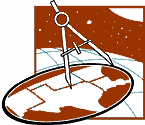|
 |
 |
|

Learning From the World Outside the Classroom
Activities for elementary students
Your school yard and its surrounding neighborhood is a laboratory where
teachers and elementary students can actively investigate mathematics and science.
Teachers whose classes are not near such rich centers as museums or botanical gardens must use the local community as a source for science and mathematics learning. Short trips to the school yard that become an integral part of the class schedule can help students build an understanding of the natural world and increase their sophistication in observing and interpreting their surroundings. In fact, 10- and
15-minute field trips may be ideal for many topics. Students who develop skills working in groups, forming questions, collecting
data, and observing their school yard laboratory will find that
these experiences enhance
their visits to other places as opportunities arise.
School yard explorations can focus on such topics as plants, trees, animals, the interdependence of living things, physical and chemical changes, sound, weather and climate, and geology. For example, shadow activities can enhance the study of the solar system and provide concrete experiences of the sun's influence on our planet.
- Let younger children explore shadows in the school yard. What is the largest shadow? What is the smallest? Put the children in a circle and have them count the number of shadows. Which way do all
the shadows point?
- Use a thermometer with older students to compare the temperature difference in full sun and shadow. What conclusions can they draw from these measurements? What temperature differences might be plotted on the same location throughout the day? Throughout the week or month?
The outdoors can reflect mathematics principles as well. Data gathered by student teams may present more solid examples
than textbook representations.
- The size of a shadow is directly proportional to the size of an object. Therefore, if a 1-meter ruler held perpendicular to the ground throws a 66-centimeter shadow and a tree shadow is 5.5 meters long, the tree's height can be calculated to be 8.33 meters (66:100=5.5:x). Try these calculations at different times of the day and at different times of the year.
- Let the students discover the constant pi. Send teams of students outside to measure circular objects: trees, flagpoles, trash cans, utility poles. They may want to use yarn or string or a tape measure to wrap around the object for measurement of the circumference. To determine the diameter, use three yardsticks or meter sticks. Place a stick on each side of
the object, making sure the two sticks are parallel and at the same height from the ground. Then use the third stick to measure the distance between the extended portions of the two parallel sticks-that is the diameter. The teams can post the measurements for their various objects on a statistical table. They may also want to note the radius for each of the objects. Ask the students to look at the data and see if they notice any special relationships among the various measurements. Ask each team to divide the value for the circumference by the value of the diameter and post the results. The constant pi, 3.14 or 3 1/7, will emerge from these results.
For more ideas on using resources outside the classroom, see
Ten-Minute Field Trips by Helen Ross Russell (1990). These have been
used with permission of the National Science Teachers Association, 1840 Wilson Blvd.,
Arlington, VA 22201. Cost: $16.95 + $4.95 s/h (1-800-722-6782).
Classroom Compass Back Issues:
Issue 3.1 Contents:
Previous:
Next
|
|
 |
 |